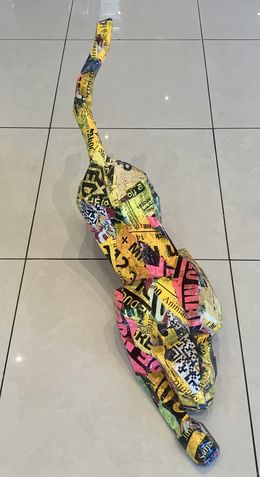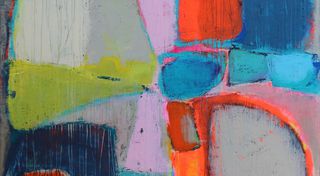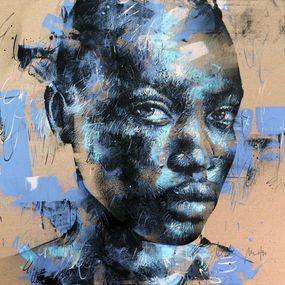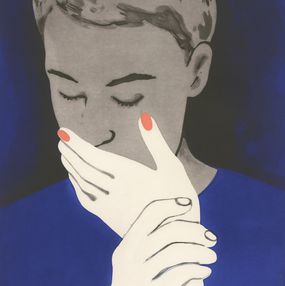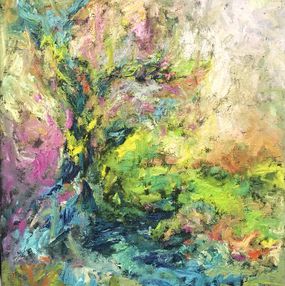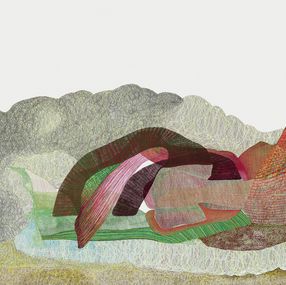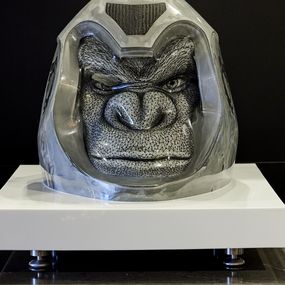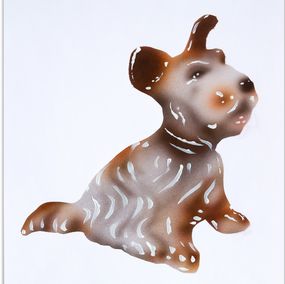
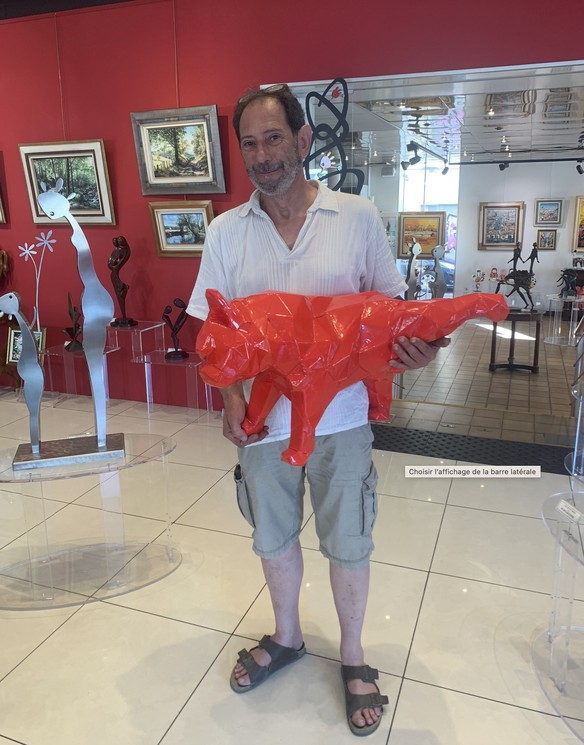
Biography
A graduate of the School of Fine Arts in Toulouse and Santa Cruz de Tenerife (Spain) and with a Master II in Engineering and Territorial Animation (Bordeaux III), for years I was involved as an assistant to internationally renowned artists: Joël Hubaut (1999-2001), Jean-Pierre Raynaud (2001) then as a scenographer at the Museum of Ancient and Contemporary Art in Epinal. But above all Jacques Villeglé (Founder of the New Realists movement with Yves Klein, Jean Tinguely, Nikki de St-Phale, Harman, César, Raymond Hains, François Duffrène) for around ten years (1997-2007) with whom I was able to tour France of the places where amplified music was played as well as the major contemporary arts venues in France and Europe (galleries, museums and arts centers) until his retrospective exhibition at the Centre Georges Pompidou-Beaubourg in 2008.
In 2007 I encountered cardboard. I taught myself cardboard for 12 years, becoming more and more intense, before undertaking training as a cardboard craftsman.
In 2018, I decided to make my passion my professional activity, and to develop a professional project while working to promote cardboard to restore this material to its former glory, beyond the ecological and recycling aspects, through an artistic approach to my creative work.
This material is available in industrial quantities and for a cost of zero since it is thrown away by the ton every day. Cardboard is very easy to work with and without having to invest in a large machine, unlike wood for example which quickly requires tools to be cut, perforated, sanded, etc., with cardboard for less than a hundred euros we have all the necessary equipment. I studied at the school of fine arts, and as a student with little money we quickly fall back on the D system and recycling. I kept this operating principle after my studies, I am not a big consumer and I like the idea of making waste my raw material.
Cardboard, "Why not!?" More than a technique, I would rather talk about the material. Cardboard is found everywhere, it is salvaged and recycled... At first, I used cardboard to make my own custom furniture... and I fell into it without being able to stop because cardboard is very addictive, long in its implementation (especially at the beginning) but above all infinite in possibilities. Moreover, the cardboard that I recover is a waste which is my raw material for manufacturing, it is by sublimating it that it becomes a piece of furniture, an object, a sculpture and ultimately no longer be considered as waste.
It all starts with simple diagrams, some small sketches as research, when I think I have found the right shape and the right idea I refine the drawing, for my clients I do a coloring. This drawing is reproduced at its actual size on a cardboard plate and cut to obtain a profile.
From this stage, I create an internal structure with a large quantity of small pieces of cardboard which will make the furniture solid. Each piece of furniture, depending on its purpose, has a different internal structure because an armchair does not have the same constraints as a table or a console...
Next comes the step of gluing this internal structure and an external shell (still only with cardboard) which rests on the interior part, thus ensuring the solidity of the furniture at all points... I deliberately remain quite vague about this process, which remains somewhat of a workshop secret. When the manufacturing is done, there may be a sanding step to correct certain small defects because I work with a ruler and a cutter as my only tools; everything is done entirely manually without electric tools.
The next step is krafting, a marouflage of kraft tape which will consolidate my collages and secure each part between them and guarantee additional solidity, then a krafting face by face of the whole which also reinforces the whole and gives homogeneity to the whole. Several layers of paper can be glued face by face in order to obtain the best possible result and remove small defects of the cardboard, folds, snags for example.
I can leave it at that and the piece of furniture can be considered finished at this level of achievement, but sometimes I push the finish or decoration further by adding color or texture, either with colored and/or textured paper, or by applying paint or varnish, I can also apply resin for a most surprising finish. The process is quite long.
I also work with 3D software, when I make cardboard sculptures of course, the creation process is completely different from that of furniture. Indeed, the process begins with a 3D modeling by computer. Once the drawing is done it must be transformed back into 2D to cut it into pieces that can be folded. Finally transferred onto cardboard each piece must be folded and assembled by gluing them together to reconstitute the whole.
Almost all cardboard boxes are recycled cardboard boxes because manufacturers make their boxes with a part of pulp from recycling. For my part, I only use recycled cardboard that I recover. At first I went around the dumpsters of stores to supply myself with raw materials, today I have "official suppliers". Indeed, on a principle of circular economy, I created a small recovery network in particular in bicycle shops and a car garage run by friends who are kind enough to keep the cardboard boxes of the bikes they receive for me.
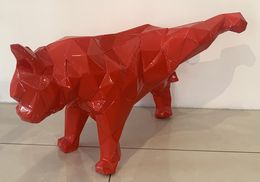
Stéphane Munoz
Sculpture - 43 x 34 x 74 cm Sculpture - 16.9 x 13.4 x 29.1 inch
$877

Stéphane Munoz
Sculpture - 46 x 30 x 47 cm Sculpture - 18.1 x 11.8 x 18.5 inch
$731

Stéphane Munoz
Sculpture - 93 x 136 x 40 cm Sculpture - 36.6 x 53.5 x 15.7 inch
$2,193

Stéphane Munoz
Sculpture - 84 x 150 x 45 cm Sculpture - 33.1 x 59.1 x 17.7 inch
$2,193

Stéphane Munoz
Sculpture - 28 x 49 x 27 cm Sculpture - 11 x 19.3 x 10.6 inch
Sold
